
15-12-2025 07:09
 Danny Newman
Danny Newman
indet. Rutstroemiaceae sp. on unk. fallen leavesMc

15-12-2025 21:11
 Hardware Tony
Hardware Tony
Small clavate hairs, negative croziers and IKI bb

15-12-2025 15:54
 Johan Boonefaes
Johan Boonefaes
Unknown anamorph found on the ground in coastal sa

15-12-2025 15:48
 Danny Newman
Danny Newman
Melanospora cf. lagenaria on old, rotting, fallen

15-12-2025 07:05
 Danny Newman
Danny Newman
Pseudosclerococcum golindoi (det: Zotto)near Cosb

15-12-2025 11:49
 Danny Newman
Danny Newman
ITS sequences from the following two collections B

15-12-2025 12:34
 Danny Newman
Danny Newman
indet. Rhytismataceae on oak leafnear Purchase Roa

09-12-2025 12:06
 Andgelo Mombert
Andgelo Mombert
Bonjour,Je recherche l'article concernant Hypobryo
Hyalorbilia?
Martin Bemmann,
07-12-2009 16:02
 Hello,
Hello,this very tiny discomycete is growing on a dead and partly rotten branch of hardwood, lying on the ground in a moist environment. The apothecia are on the upper, still firm side of the branch, while downside the soft, soaked and rotten part is inhabited by Mollisia cinerea cf. and Natantiella ligneola (the latter on all sides of the branch).
The largest apothecia are 330µm in dm., hyaline and punctate fixed to the substratum.
The paraphyses are "glued"together with a gel, so I couldn't observe them properly. But my impression is that they are not capitate.
The asci vary in size (34)40-55(59)x6,1-7,5 µm.
Spores are cylindrical, slightly allantoid and hyaline with some oildrops at the polar ends. Sometimes one septum. (6,7)8,1-9,9(10,9)x2,1-3,1 µm.
In each of my preparations I found large conidia, always of the same type. They have 7 septa, the contents filled mostly with many small oildrops, with large ones in 1 case.
With Zotto's key I come to Hyalorbilia inflatula, but does this fit macroscopicaly?
With best regards,
Martin
Jacques Fournier,
07-12-2009 16:12

Re:Hyalorbilia?
Hi Martin,
I don't know about the disco but what you took for conidia are merely wandering mature spores of Lasiosphaeris hirsuta, a common dweller of water-soaked wood.
Good luck,
Jacques
I don't know about the disco but what you took for conidia are merely wandering mature spores of Lasiosphaeris hirsuta, a common dweller of water-soaked wood.
Good luck,
Jacques
Martin Bemmann,
07-12-2009 16:17

Re:Hyalorbilia?
Thank you Jaques!
I will check the branch again, maybe I will find some ascocarps of them, too.
Cheers,
Martin
I will check the branch again, maybe I will find some ascocarps of them, too.
Cheers,
Martin
Hans-Otto Baral,
07-12-2009 17:42

Re:Hyalorbilia?
Hi Martin
with which key did you identify, from the DVD? Almost incedible because H. inflatula has spore about 6-8 x 1-1.2 µm. Did you apply iodine? Croziers? Surely no Orbiliaceae. It could be a Parorbiliopsis (a Hyaloscypha without hairs). What type of excipulum?
Zotto
with which key did you identify, from the DVD? Almost incedible because H. inflatula has spore about 6-8 x 1-1.2 µm. Did you apply iodine? Croziers? Surely no Orbiliaceae. It could be a Parorbiliopsis (a Hyaloscypha without hairs). What type of excipulum?
Zotto
Martin Bemmann,
07-12-2009 19:09

Re:Hyalorbilia?
Yes Zotto,
a chain of mistakes and misunderstandings! I raised my doubts already in the Ref/Titre line by putting a questionmark after the word Hyalorbilia.
Obviously I stopped reading your key properly after point 11 only looking for the length but not the width of the spores.
I will try to make new preparations tonight, that will answer your questions( textura, croziers, iodine etc.)
Meanwhile I checked the specimens of Parorbiliopsis on your DVD. Far to much oil-content, as I could observe in my examples. But Hyaloscypha looks promising...
Your totally unexperienced
and cordially greeting
Martin
a chain of mistakes and misunderstandings! I raised my doubts already in the Ref/Titre line by putting a questionmark after the word Hyalorbilia.
Obviously I stopped reading your key properly after point 11 only looking for the length but not the width of the spores.
I will try to make new preparations tonight, that will answer your questions( textura, croziers, iodine etc.)
Meanwhile I checked the specimens of Parorbiliopsis on your DVD. Far to much oil-content, as I could observe in my examples. But Hyaloscypha looks promising...
Your totally unexperienced
and cordially greeting
Martin
Martin Bemmann,
08-12-2009 00:41

Re:Hyalorbilia?
Hi Zotto,
I made some more preparations to answer your questions.
The IKI-reaktion was zero, as far as I could see.
Adding congo-red I could observe that paraphyses are slightly capitate. Asci and spores still look the same, so I don't think I mixed up different species from the same substratum.
Croziers are absent, though I am not good enough yet in judging this feature...
And last for the textura of the excipulum I would name this an intricata, no I will leave this on you...;-) (if possble by my sadly bad picture).
Cheers,
Martin
It seems to be an even more puzzeling fungus for me than I had expected!
The documents of Parorbiliopsis on your DVD show quite a big range of variability (IKI, croziers).
I have no other sources at hands to study my find.
I made some more preparations to answer your questions.
The IKI-reaktion was zero, as far as I could see.
Adding congo-red I could observe that paraphyses are slightly capitate. Asci and spores still look the same, so I don't think I mixed up different species from the same substratum.
Croziers are absent, though I am not good enough yet in judging this feature...
And last for the textura of the excipulum I would name this an intricata, no I will leave this on you...;-) (if possble by my sadly bad picture).
Cheers,
Martin
It seems to be an even more puzzeling fungus for me than I had expected!
The documents of Parorbiliopsis on your DVD show quite a big range of variability (IKI, croziers).
I have no other sources at hands to study my find.
Stip Helleman,
08-12-2009 02:03

Re:Hyalorbilia?
Hi Martin,
I would consider the ascus base to have croziers, if not the base should have a straight septum
cheers Stip
I would consider the ascus base to have croziers, if not the base should have a straight septum
cheers Stip
Hans-Otto Baral,
08-12-2009 11:53

Re:Hyalorbilia?
Hi Martin & Stip
Parorbiliposis is not a good genus, it is probably a synonym of Hyaloscypha in most cases. The inamyloid asci are a good feature, and the hairs seem to me partly pointed though very short. Perhaps the ascus bases have outgrowths but no true croziers (not very clear on your image).
I think this could be Hyaloscypha quercicola, a xerotolerant species (though also collected on the moist ground) with inamyloid asci without croziers. Also spore would fit very well.
Zotto
Parorbiliposis is not a good genus, it is probably a synonym of Hyaloscypha in most cases. The inamyloid asci are a good feature, and the hairs seem to me partly pointed though very short. Perhaps the ascus bases have outgrowths but no true croziers (not very clear on your image).
I think this could be Hyaloscypha quercicola, a xerotolerant species (though also collected on the moist ground) with inamyloid asci without croziers. Also spore would fit very well.
Zotto
Martin Bemmann,
09-12-2009 00:52

Re:Hyalorbilia?
Hi Zotto and Stip!
Thank you for your efforts!
But beeing a stubborn person I am still not fully convinced or happy with that . Hyaloscypha quercicola should have distinctive hairs at the margin (by reference to the few documents I saw). Although there is a H. quercicola cf. without hairs on Zotto's DVD (HB 5549).
I looked again at an apothecium and I couldn't see any hairs neither macro- nor microscopicaly.
I tried (maybe in vain) to document the crozierslesness and the shape of the agglutinated paraphyses .
Am I stranded on one of the unexplored islands in the ascomycetous ocean?
Heartly
Martin
l
Thank you for your efforts!
But beeing a stubborn person I am still not fully convinced or happy with that . Hyaloscypha quercicola should have distinctive hairs at the margin (by reference to the few documents I saw). Although there is a H. quercicola cf. without hairs on Zotto's DVD (HB 5549).
I looked again at an apothecium and I couldn't see any hairs neither macro- nor microscopicaly.
I tried (maybe in vain) to document the crozierslesness and the shape of the agglutinated paraphyses .
Am I stranded on one of the unexplored islands in the ascomycetous ocean?
Heartly
Martin
l
Stip Helleman,
09-12-2009 01:33

Re:Hyalorbilia?
Hi Martin,
the hairs in H. quercicola are very indistinct most of the times, to check for them you should try to put a Frb. hymenium down on the slide and then cover it gently without tapping. When there is some air between the hairs they are better seen.
from your CR photo's it could be also without croziers, look at the free ascus bases in CR, no croziers one solid red line.
Stip
the hairs in H. quercicola are very indistinct most of the times, to check for them you should try to put a Frb. hymenium down on the slide and then cover it gently without tapping. When there is some air between the hairs they are better seen.
from your CR photo's it could be also without croziers, look at the free ascus bases in CR, no croziers one solid red line.
Stip
Hans-Otto Baral,
09-12-2009 13:19

Re:Hyalorbilia?
Nice living ascus!
yes, i would also say: no croziers. And I had recently a discussion about Hyaloscypha intacta versus Parorbiliopsis minuta which could be even a single species with very variable length of hairs, until totally absent
Zotto
yes, i would also say: no croziers. And I had recently a discussion about Hyaloscypha intacta versus Parorbiliopsis minuta which could be even a single species with very variable length of hairs, until totally absent
Zotto
Martin Bemmann,
09-12-2009 23:26

Re:Hyalorbilia?
Hi Zotto and Stip,
again, thank you for your remarks. So it seems to be a hairless one. I know such specimen by looking in the mirror, every morning...
I made a fresh preparation and I show you the margin with different enlargements.
Squeezing gently resulted in no new insights. I couldn't see any hairs.
The last picture will show an empty, dead ascus, but featuring its straight terminal septum.
So I will save this fungus to my files as "Hyaloscypha quercicola var. calva" ;-)
Thank you very much for your patience,
Regards,
Martin
again, thank you for your remarks. So it seems to be a hairless one. I know such specimen by looking in the mirror, every morning...
I made a fresh preparation and I show you the margin with different enlargements.
Squeezing gently resulted in no new insights. I couldn't see any hairs.
The last picture will show an empty, dead ascus, but featuring its straight terminal septum.
So I will save this fungus to my files as "Hyaloscypha quercicola var. calva" ;-)
Thank you very much for your patience,
Regards,
Martin
Stip Helleman,
09-12-2009 23:40
Martin Bemmann,
10-12-2009 00:36

Re:Hyalorbilia?
Hi Stip,
that's mean! ;-)
I was clear with this Lasiosphaeris-contaminated H.q.v.c. and you are pushing the reset-button by now!
Ok, no new fungus for tomorrow, the same notorious one, checking again for hairs...
Cheers,
Martin
that's mean! ;-)
I was clear with this Lasiosphaeris-contaminated H.q.v.c. and you are pushing the reset-button by now!
Ok, no new fungus for tomorrow, the same notorious one, checking again for hairs...
Cheers,
Martin
Martin Bemmann,
10-12-2009 20:31
Martin Bemmann,
10-12-2009 20:34
Hans-Otto Baral,
10-12-2009 21:10

Re:Hyalorbilia?
yes, these hairs look like short-haired Hyaloscyphas, like quercicola or intacta.
And your last picture shows Protounguicularia/Olla transiens.
Zotto
And your last picture shows Protounguicularia/Olla transiens.
Zotto
Martin Bemmann,
10-12-2009 21:51

Re:Hyalorbilia?
Thank you Zotto for your confirmation and giving me a shortcut to Olla transiens for my current object. I am really impressed you can provide this estimation only by seeing some hairs... (well, there is a lot to learn for me)! I made some strange (to me) observations concerning IKI-reaction in the Olla-case. But I will double check it before I report.
Best regards,
Martin
Best regards,
Martin
Martin Bemmann,
10-12-2009 23:19

Re:Hyalorbilia?
Hi again,
I learned meanwhile, these refractive, glassy tips are indicative for O. transiens. Everything else fits too: asci having no croziers, hairs glued together to bundles etc... I will noth bother you with details.
Just one remark on the IKI-reaction:
I accidentally observed the moment through the microscope when the iodine reached the asci. The apical aparatus turned bright blue for 1-2 seconds; and then this phenomenon vanished completely or the staining was reduced to a slim dark-red to dark-blue line just on the tip of the ascus.
Can you confirm this observation?
Best regards,
Martin
I learned meanwhile, these refractive, glassy tips are indicative for O. transiens. Everything else fits too: asci having no croziers, hairs glued together to bundles etc... I will noth bother you with details.
Just one remark on the IKI-reaction:
I accidentally observed the moment through the microscope when the iodine reached the asci. The apical aparatus turned bright blue for 1-2 seconds; and then this phenomenon vanished completely or the staining was reduced to a slim dark-red to dark-blue line just on the tip of the ascus.
Can you confirm this observation?
Best regards,
Martin
Stip Helleman,
11-12-2009 00:18

Re:Hyalorbilia?
Hi Martin,
It occurs in O. transiens, the species seems to be rather variable in this character. What you saw was the increasing of the iodine concentration in your mount that provoced the blue-red colour.
By the way your primair hairs do look like quercicola, intacta is unknown to me.
Stip
It occurs in O. transiens, the species seems to be rather variable in this character. What you saw was the increasing of the iodine concentration in your mount that provoced the blue-red colour.
By the way your primair hairs do look like quercicola, intacta is unknown to me.
Stip
Martin Bemmann,
11-12-2009 09:27

Re:Hyalorbilia?
Thank you Stip!
Martin
Martin
Hans-Otto Baral,
11-12-2009 09:32

Re:Hyalorbilia?
Hi Martin
O. transiens reacts hemiamyloid in the apical ring (about this reaction see my homepage
http://www.gbif-mycology.de/HostedSites/Baral/
"Iodine reactions in Ascomycetes")
Huhtinen uses Protounguicularia for the species, for some morphological reasons which I forgot but which are may be reasonable.
Zotto
O. transiens reacts hemiamyloid in the apical ring (about this reaction see my homepage
http://www.gbif-mycology.de/HostedSites/Baral/
"Iodine reactions in Ascomycetes")
Huhtinen uses Protounguicularia for the species, for some morphological reasons which I forgot but which are may be reasonable.
Zotto
Stip Helleman,
11-12-2009 10:04

Re:Hyalorbilia?
By the way has anyone this article?
Huhtinen, Hawksworth & Ihlen
Observations on two glassy-haired lichenicolous discomycetes
Lichenologist (2008), 40 : 549-557
Stip
Huhtinen, Hawksworth & Ihlen
Observations on two glassy-haired lichenicolous discomycetes
Lichenologist (2008), 40 : 549-557
Stip
Martin Bemmann,
11-12-2009 11:37

Re:Hyalorbilia?
Hi Zotto,
I am aware of hemiamyloidity but I studied your article again now. As far as I understand I saw an RB type reaction, being blue as long as the concentration of iodine was low and turning into red when the concentration got more intense. This would explain to me why I saw red and blue apices in the same preparation, depending on how much iodine had reached the respective ascus.
Best regards,
Martin
I am aware of hemiamyloidity but I studied your article again now. As far as I understand I saw an RB type reaction, being blue as long as the concentration of iodine was low and turning into red when the concentration got more intense. This would explain to me why I saw red and blue apices in the same preparation, depending on how much iodine had reached the respective ascus.
Best regards,
Martin
Hans-Otto Baral,
11-12-2009 13:41
Martin Bemmann,
11-12-2009 22:35

Re:Hyalorbilia?
Hi Zotto,
thank you very much for providing us this article by Huhtinen et. al.!
While I was going through its very dense content (for me as an ignorant) I was disturbed by several claims as there is on first hand the lichenocolouity of this genus (Protounguicularia), or should I assume that only specimen found on lichen were examined for this paper and it could be found on other substrata as well? And my find is not urceolate at all. And if you don't mind, I could open a new thread with my observations on this find shortly.
Cheers,
Martin
thank you very much for providing us this article by Huhtinen et. al.!
While I was going through its very dense content (for me as an ignorant) I was disturbed by several claims as there is on first hand the lichenocolouity of this genus (Protounguicularia), or should I assume that only specimen found on lichen were examined for this paper and it could be found on other substrata as well? And my find is not urceolate at all. And if you don't mind, I could open a new thread with my observations on this find shortly.
Cheers,
Martin
Hans-Otto Baral,
11-12-2009 22:37

Re:Hyalorbilia?
Don't hesitate showing us your pics on this find
Zotto
Zotto
Stip Helleman,
11-12-2009 23:46

Re:Hyalorbilia?
Hoi Zotto,
Thanks for the paper, it seems that only the hair chemistry counts for the resurection of Protounguicularia and of coarse a type specimen is needed for the genus.
Amitiés
Stip
Thanks for the paper, it seems that only the hair chemistry counts for the resurection of Protounguicularia and of coarse a type specimen is needed for the genus.
Amitiés
Stip

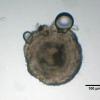
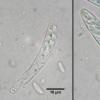

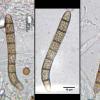
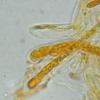
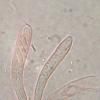
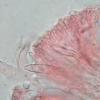
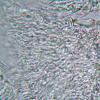
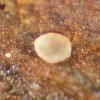
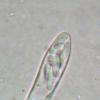

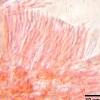
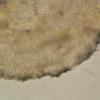
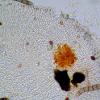
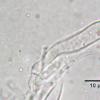
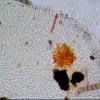
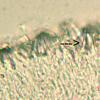
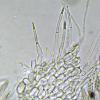
 9784.pdf
9784.pdf